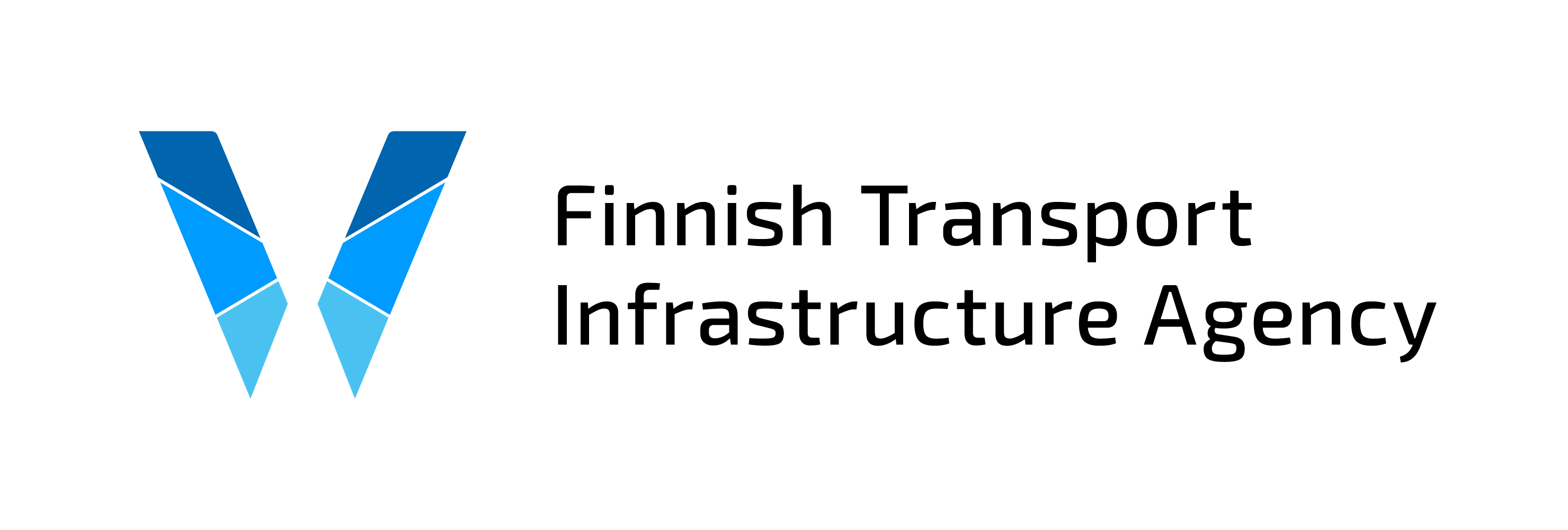Real-time rail network data brought together – maintenance and development work now more efficient
Published 30.6.2021 13.47
The Finnish Transport Infrastructure Agency has introduced an electronic rail infrastructure information management system that can be used to manage railway assets and monitor the condition and maintenance of the railway network. The system consists of four different applications that together facilitate the flow of information, harmonise reporting and streamline forecasting of track work.
Up-to-date information now easily available
The most significant change brought about by the digitalisation of rail infrastructure data is that the track objects and their maintenance data can now be found in the same location at the Finnish Transport Infrastructure Agency (FTIA). This information is now quickly and easily accessible to those who need it – all in one single system. In addition, a large number of entries are made into the system, as access rights are held by those engaged in the planning, construction and maintenance of nearly 2,000 rail lines.
‘Contractors must record in the system as soon as possible any observations and changes regarding track infrastructure: on the same day in the case of maintenance work, and within a week for construction projects. This ensures that the information provided by the system is as up-to-date as possible. The reporting carried out in the different maintenance areas also serves national, long-term planning work,’ explains Magnus Nygård, Director of Maintenance at the Finnish Transport Infrastructure Agency.
Before the digitalisation project, the different operators had access to their own different information systems and reporting tools. In the old model, it was hard to form an overall picture: the track objects were not linked to each other, there were inaccuracies in location data, updating of changes was slow and there was no register that contained all the data. The introduction of the new information system has therefore required the collection of an enormous amount of track data from old registers, track drawing archives, the systems of different operators, and local listings.
‘At present, the system contains more than 300,000 different track objects, and more than 600,000 action entries have already been made. The application is able to process data in a diverse and extensive manner. The development of the new information system also makes it possible to improve cost-effectiveness, as some of the previously systems can be completely discarded,’ says Satu Kekäläinen, Project Manager at the Finnish Transport Infrastructure Agency.
Digitalisation benefits now and in the future
The digitalisation of rail infrastructure data and the introduction of the new information system also lead to operating model changes that are significant for the entire sector. For the Finnish Transport Infrastructure Agency, for example, the changes enable more efficient property management, as they ensure a reliable situational picture of the railway network and its condition. For service producers, on the others, the changes enable the development and design of new services on the basis of up-to-date and openly available information.
The digitalisation of information enables better railway maintenance in many different ways – from daily maintenance work right through to major track renovations. In the future, the efficient use of information will require both a long-term approach and reshaped operating methods. The current system provides an excellent foundation for further development.
The recently completed RAID-e project has been extended, with the new project phase beginning in July. The goals for this next stage include developing automated processes based on existing data in order to facilitate the management of maintenance measures. These could involve, for example, automated creation and processing of entries. The ongoing project will also take into account the potential benefits for the projects and systems development of other actors, such as the traffic control company Fintraffic and the Finnish Transport and Communications Agency Traficom, as well as integration with such other systems.
Further information
Project Manager Satu Kekäläinen
[email protected]
+ 358 29 534 3327
Attachments
This is an old article. It may contain deprecated information and the links may not work. Our publications can be found in the Doria publication archive
